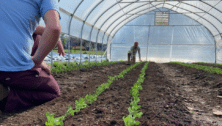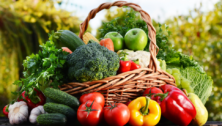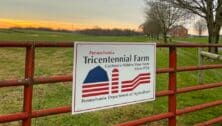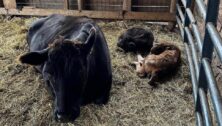Chester County Ag Notes: Humble Hay Crop Drives County’s Ag Economy
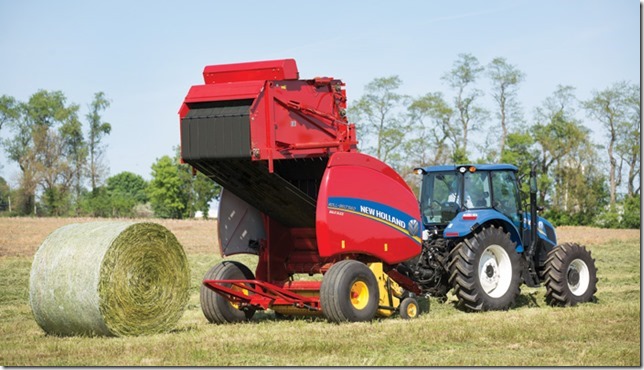
By Duncan Allison
For centuries farmers have relied on their hay crop to sustain their livestock during the winter months. Cattle, horses, sheep and goats are all ruminants so their digestive system has developed to survive on grass and forage plants.
During the summer the animals can get sufficient nutrition by grazing the growing pasture. However they need feed during the winter months and hay provides that vital nutrition.
The hay crop is basically grass and forage species harvested during the summer months and carefully dried to make good quality feed. Race horses and dairy cattle are fed straight alfalfa or mixed hay. All other horses manage well on high quality grass hay.
The grass, usually timothy or orchard grass, and alfalfa are cut and dried in the field so that dry conditions need to follow to ensure a high quality product that will store well.
Farmers can be assured of a first cut but the number of subsequent harvests depends on rainfall and sufficient moisture in the soil to sustain ongoing growth. Depending on the type of hay crop and moisture conditions during the summer, harvests vary from two to five.
The dried hay is baled in the field by a wide range of baling machines that produce bales of different sizes. In fact the largest manufacturer of hay balers, New Holland, part of the international group CNH Industries NV, is located in Lancaster County.
Since rainfall can affect the quality of the hay, the bales are stored under cover to prevent deterioration in quality and the development of molds.
Chester County is fortunate that there are two markets for hay. Producers with high quality hay can supply the many horse owners in the county who require hay year round for feeding. The alfalfa-grass hay is used by the dairy industry and beef producers. Lower quality hay can be sold for mushroom compost producers to provide the growth medium for growing mushrooms.
Not surprisingly the price per ton varies greatly with the type and quality of hay and can vary for around $90-100/ton for standard mushroom hay, $200-250/ton for dairy cows to $300-450/ton for horse hay.
Hay and livestock forage crops were grown on 36,364 acres according to the 2012 census It is estimated that the hay for the production of mushroom compost alone requires about 40,000 acres so it is clear that much hay has to be obtained from nearby counties and states.
Since almost half of our farms (766) are shown as producing hay and forage crops, they represent almost 45% of all listed farms – 1,730.
Next time you see a hay field you will know it is playing a critical part in the mushroom and livestock industries of Chester County. The humble hay provides vital nutrition for livestock and also serves a valuable role in rotational cropping and preserving our soil.
Connect With Your Community
Subscribe to stay informed!
"*" indicates required fields

















![95000-1023_ACJ_BannerAd[1]](https://vista.today/wp-content/uploads/2023/03/95000-1023_ACJ_BannerAd1.jpg)




























